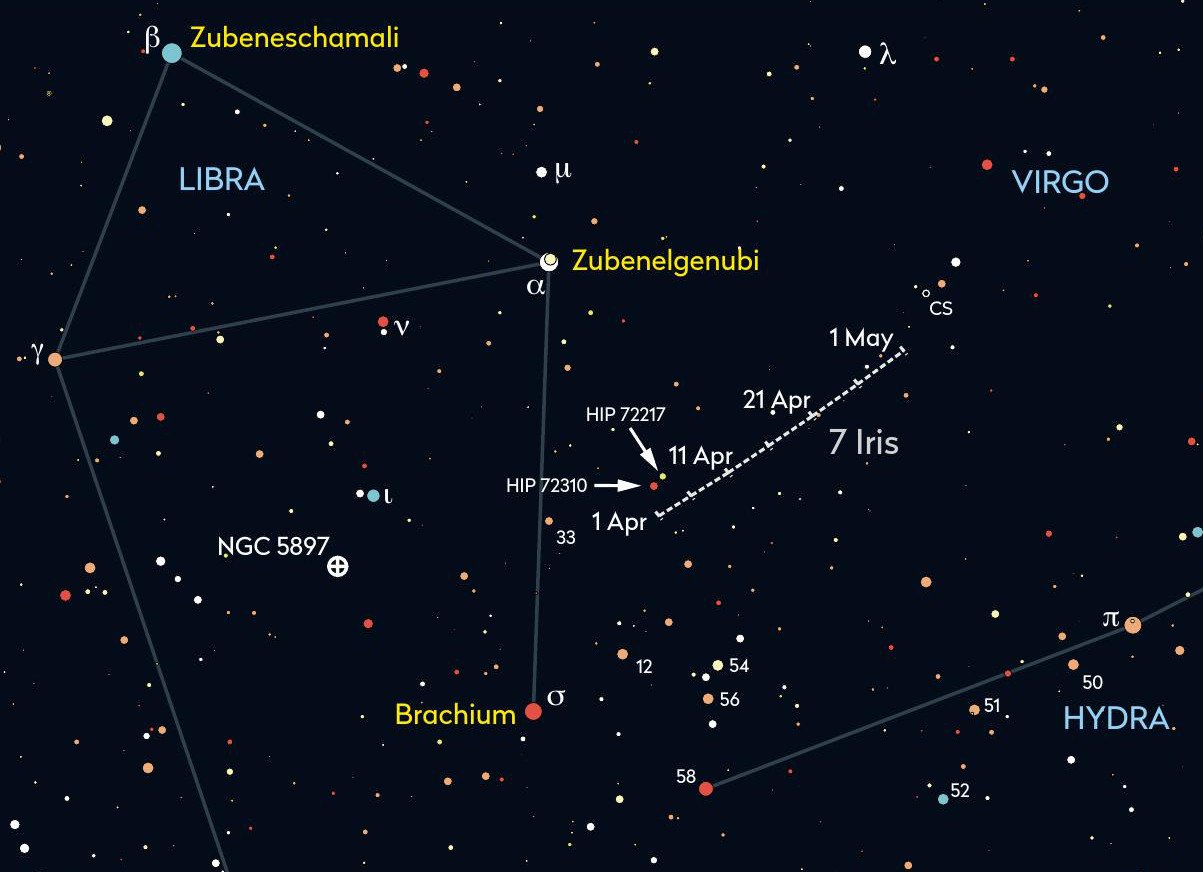UK observers with telescopes will be able to view minor planet 7 Iris all month

Minor planet 7 Iris reaches opposition on 30 April, when it will be well-placed within the constellation of Libra, approximately three-fifths of the way along a line from Spica (Alpha (α) Virginis) towards Zubenelgenubi (Alpha (α) Librae). From the UK, this location gets to an altitude of around 22°, not particularly high, but still enough to give a reasonably clear view. Iris begins the month just south of a pair of sixth-magnitude stars found by first identifying the mid-point between Zubenelgenubi and Brachium (Sigma (σ) Librae), then extending a line at right angles to the line between both stars from this point for 2.4° westward.
The stars are easy to locate with binoculars. At mag. +10.1, Iris will be too faint to see through average binoculars throughout the month, a small telescope being the minimum equipment needed.
At 00:00 BST (01:00 UT) on 1 April, shining at mag. +10.2, Iris sits half a degree below the star pair mentioned (HIP 72217 and HIP 72310). It then tracks west-northwest, passing through a fairly barren star-scape, north of Hydra’s tail stars. It passes a fraction south of mag. +6.6 HIP 70518 on 28 April. On opposition date, 30 April, Iris brightens to mag. +9.6 and is located adjacent to Libra’s western border with Virgo. Again, the lack of bright field stars in this part of the sky will make observing this minor planet an interesting spring challenge.
Discovered by the English astronomer John Russell Hind on 13 August 1847, Iris is an S-type (siliceous, stoney) asteroid with a mean diameter of 241 kilometres. It orbits the Sun between Mars and Jupiter (in the main asteroid belt) varying its distance from the Sun between 1.83 AU and 2.94 AU. It takes 3.7 years to complete each orbit.